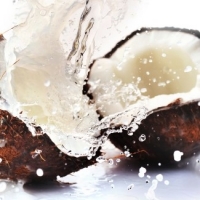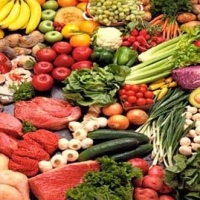Glycemic Index- What Should you know about this in order to lose fat?
pplying GI to real-life diets is complex, weigh all information before relying on glycemic index. If you check different sources on the GI of foods, the numbers don't always match. The glycemic index takes into account only the type of carbohydrate, not the amount of carbohydrate, in a usual serving. Some foods are more concentrated sources of carbohydrates than others. For example, chocolate cake has 52 grams of carbohydrate in a usual serving, while carrots deliver only 6 grams of carbohydrate in a serving. So even though the glycemic index of carrots is higher (47, vs. 38 for cake) chocolate cake is going to have a much greater total effect on blood sugar, because it takes 81 servings of carrots to equal the carbohydrate in a serving of cake. The GI in a given food can vary, depending on where it is grown and how it is processed and cooked. Australian potatoes have a higher GI than American potatoes. In general, the more processed the food, the higher the GI. Even cooking pasta for a longer time can raise the GI. Generally, whole grains have a lower GI than refined grains. But glycemic index rankings are often confusing: Bran flakes and Cheerios have a GI of 74. Shredded wheat is 75, and Fruit Loops, 69. Long-grain white rice averaged 56 in 10 studies (it ranges between 41 and 64), while brown rice averaged 55 (50-66). The average GI of white bread in six studies was 70 and of whole grain bread was 71. And, ironically, sugars have a lower GI than starches, because starches are made up totally of glucose molecules, and sugars are not. So Coca-Cola has a lower GI than Grape-nuts flakes. Studies that establish the GI of foods measure the response to a food consumed all by itself. But most of us don't eat like that. What's important is predicting the effect of the food as part of a meal. Experts disagree on the value of the glycemic index. The American Diabetes Association says that "the relationship between glycemic index and glycemic load and the development of type 2 diabetes remains unclear at this time." The Canadian and Australian Diabetes Associations have endorsed GI as a tool for improved blood glucose control. Some dietitians who work with people with diabetes recommend that their clients address other diet issues first, such as total carbohydrate and meal spacing, then try the GI concept to see if that improves blood sugars further. There's no doubt that different foods produce different glucose responses,but the total carbohydrate has much more of an effect than the GI. If you have hard time using GI diets, a better approach is to eat close to the farm. Avoid highly refined foods and focus on lean meats, beans and legumes, whole grains and fresh fruits and vegetables.
Applying GI to real-life diets is complex, weigh all information before relying on glycemic index.
If you check different sources on the GI of foods, the numbers don't always match.
The glycemic index takes into account only the type of carbohydrate, not the amount of carbohydrate, in a usual serving. Some foods are more concentrated sources of carbohydrates than others. For example, chocolate cake has 52 grams of carbohydrate in a usual serving, while carrots deliver only 6 grams of carbohydrate in a serving. So even though the glycemic index of carrots is higher (47, vs. 38 for cake) chocolate cake is going to have a much greater total effect on blood sugar, because it takes 81 servings of carrots to equal the carbohydrate in a serving of cake.
The GI in a given food can vary, depending on where it is grown and how it is processed and cooked. Australian potatoes have a higher GI than American potatoes. In general, the more processed the food, the higher the GI.
Even cooking pasta for a longer time can raise the GI.
Generally, whole grains have a lower GI than refined grains. But glycemic index rankings are often confusing:
Bran flakes and Cheerios have a GI of 74. Shredded wheat is 75, and Fruit Loops, 69.
Long-grain white rice averaged 56 in 10 studies (it ranges between 41 and 64), while brown rice averaged 55 (50-66).
The average GI of white bread in six studies was 70 and of whole grain bread was 71.
And, ironically, sugars have a lower GI than starches, because starches are made up totally of glucose molecules, and sugars are not. So Coca-Cola has a lower GI than Grape-nuts flakes.
Studies that establish the GI of foods measure the response to a food consumed all by itself. But most of us don't eat like that. What's important is predicting the effect of the food as part of a meal.
Experts disagree on the value of the glycemic index.
The American Diabetes Association says that "the relationship between glycemic index and glycemic load and the development of type 2 diabetes remains unclear at this time."
The Canadian and Australian Diabetes Associations have endorsed GI as a tool for improved blood glucose control. Some dietitians who work with people with diabetes recommend that their clients address other diet issues first, such as total carbohydrate and meal spacing, then try the GI concept to see if that improves blood sugars further.
There's no doubt that different foods produce different glucose responses,but the total carbohydrate has much more of an effect than the GI.
If you have hard time using GI diets, a better approach is to eat close to the farm. Avoid highly refined foods and focus on lean meats, beans and legumes, whole grains and fresh fruits and vegetables.
-
The Seven Secrets of Weight Loss
When embarking on a weight loss program people will almost
-
Lose Your Extra Weight without Dieting
Now a day, Dieting and weight loss is equal. Yes this is true. Weig
-
Three Of The Best Reasons Why People Prefer Using Diet Pills And Why You Should Too
-
What should You do before You start having diet pills?
I think that is true because, many people have taken tablets and learn
-
How to Lose 15 Pounds In 3 Weeks - Effective Diet Method to Burn 15 lbs. Off LIGHTNING Fast!
Would you like to learn how to lose 15 pounds in 3 weeks...and actuall
-
Paleo Diet Weight Loss – The Failure Rate Is High!
I used to wonder incessantly about Paleo diet weight loss method. Is i
- DON'T MISS
- Can Diet Harm You? Learn About Dangerous Diets
- How to Solve the Cellulite Problem Without Going Broke or Crazy
- Learn Good Eating Habits In Order To Manage Your Weight
- Eliminate Belly Fat Naturally
- Well this P90x evaluation arrives from somebody that is for the journey
- Why Atkins Works - But Do You Know The Truth?
- A Review Of The Fat Burning Furnace System
- Eleven Holiday Weightloss Tips
- Unexplained Weight Gain: Could Leaky Gut Be The Cause?
- Get Rid Of Your Flabby Arms Fast in 3 Simple Methods




